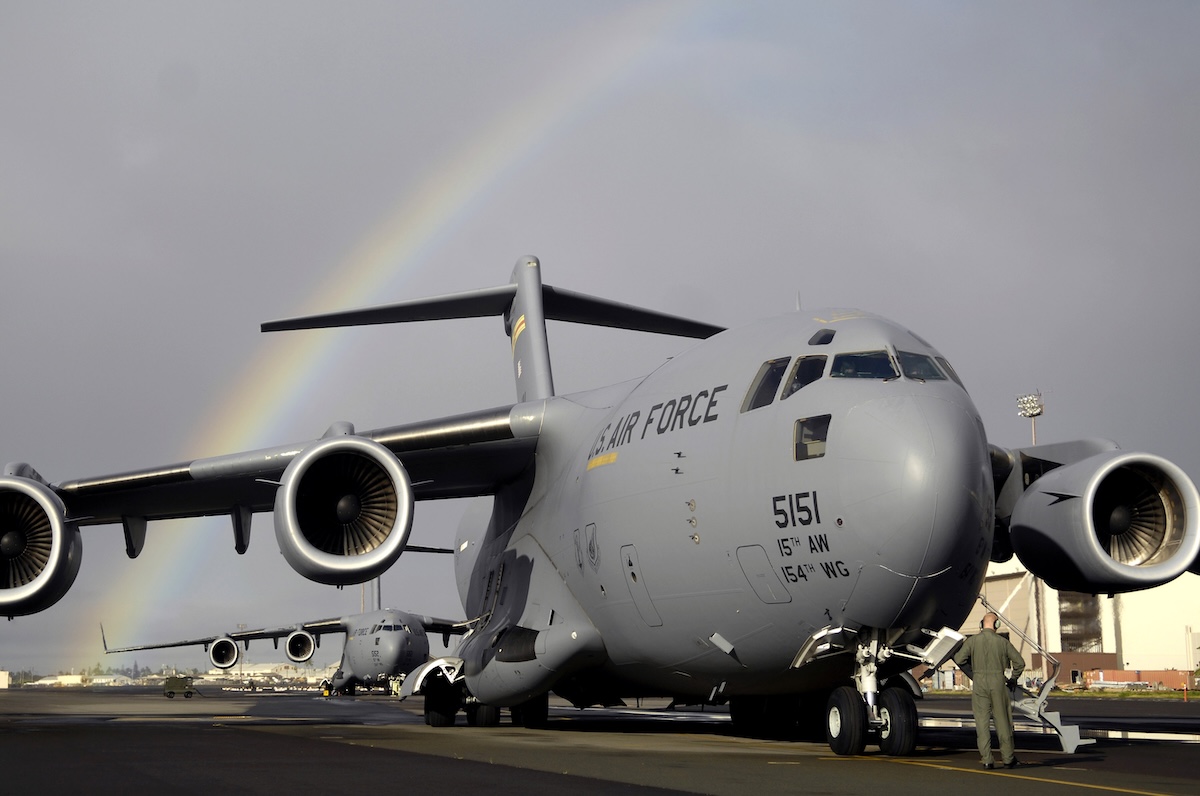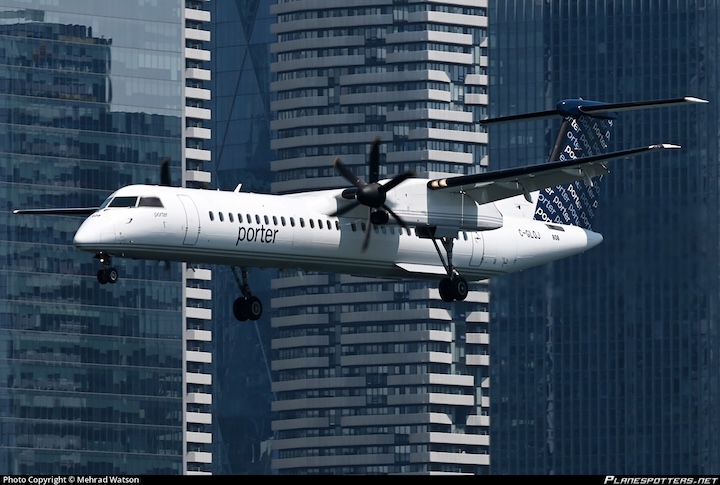Planes I enjoy
Boeing C-17 Globemaster III

I was first made aware of the C-17 Globemaster III in August 2021 during the evacuation of Kabul, where the iconic flight of Reach 871 carrying 640 Afghans1 distinguished the airframe as a uniquely reliable machine in a place and time where little else seemed to be. While its passengers did seem densely packed, the plane could have taken off with about 400 more people, based on a maximum payload capacity of 170 900 pounds2. The newsreel footage of one taxiing amid a crowd of panicked civilians exemplifies the unusual and challenging circumstances in which they’re designed to operate, to say nothing of the humanitarian tragedy of the event and the war.
The C-17 is a remarkably agile aircraft, as one can see in this video of one at an Australian airshow, flying low and turning quickly over a dense metropolitan area. It only makes sense that a plane capable of flying with an enormous payload would also be capable of maneuvering easily when empty, but it’s another thing altogether to witness it, even indirectly via a recording. Sam Eckholm’s piece on the C-17 in his series on military aviation also showcases its majesty well. As a relatively naive lay observer, I think that it tastefully balances the need to move a lot of stuff with a certain nimbleness that makes the C-17 more versatile and useful than the C-5 Galaxy, whose dimensions are somewhat comical. While the desire to master strategic airlift and logistics more broadly are deeply embedded in my identity, so too is the need to move quickly. The C-17 can perform “tactical descents”, where it deploys its thrust reversers in-flight, allowing it to descend at steeper angles, and take off and land in austere airfields, both of which I think are pretty cool.
I also like the C-17 because I ran the Air Force Marathon at Wright-Patterson AFB in 2024, and I got to see a bunch of the C-17s that the 445th Operations Group3 there, well, operates. Furthermore, the C-17 is Canada’s only strategic airlifter (designated the CC-1774) and is entirely based in CFB Trenton, which I also visited in 2024. The partnership here between the two nations exemplifies a deep and historic alliance that resonates with me quite strongly.
DeHavilland Canada Dash 8

I love regional jets because I associate them with pleasant airport experiences, in which at least one of the destinations is likely to be a small one with small crowds and small terminals. The small airport I’m thinking of is Billy Bishop Toronto City Airport (YTZ) which is based on an island in Lake Ontario, nearly a literal stone’s throw away from the central business district of Canada’s most populous city. With Chicago having abruptly deleted its lakefront landing strip at Meigs Field, YTZ feels more special than ever. The DHC-8 is part of what makes YTZ and Porter Airlines work, owing to the the dimensions of the runway and local opposition5 to turbofan aircraft.
I’ve relied mainly6 on Dash 8s for the last few years to visit friends and family in Canada, bridging the national identities I find myself forming, the development of one strengthening the other. I can’t speak for the engineering virtues of the Dash 8, but I can attest to the beauty and warm fuzzy glows of the approaches to YTZ, EWR, and MDW that I’ve only ever seen and felt from within one.
-
https://www.defenseone.com/policy/2021/08/inside-reach-871-us-c-17-packed-640-people-trying-escape-taliban/184563/ ↩︎
-
https://www.af.mil/About-Us/Fact-Sheets/Display/Article/1529726/c-17-globemaster-iii/ ↩︎
-
https://www.canada.ca/en/air-force/services/aircraft/cc-177.html ↩︎
-
https://www.nytimes.com/2013/05/21/business/global/porter-airlines-hopes-to-join-the-jet-age.html?unlocked_article_code=1.HE8.bY-1.Dm_wyMd6kK59&smid=url-share ↩︎
-
the exceptions being a) the time during Covid when international flights were still banned, and so I had to fly to Buffalo and then get a $300 cab to Toronto, and b) Thanksgiving 2024, when I drove from Chicago to Toronto to put my new car through its paces ↩︎